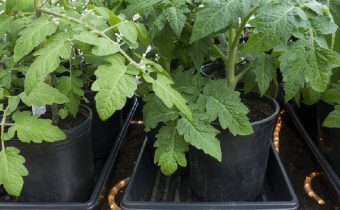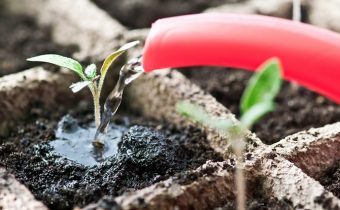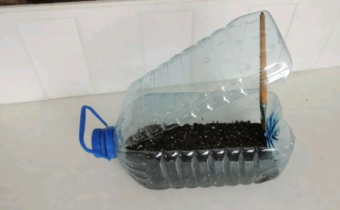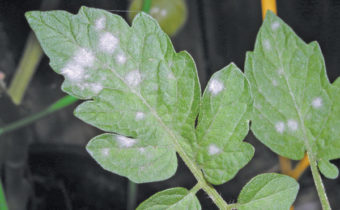How to feed tomato seedlings for fat?
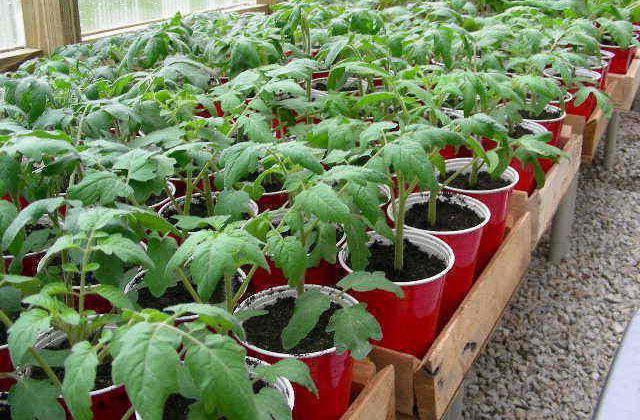
Pre-prepared soil, timely basal watering is good for the growth of tomato sprouts and fruit-bearing bushes. But this is not enough. To strengthen tomatoes at all stages of development, a balanced scheme of properly balanced feeding is needed. It can be prepared and applied using specialized fertilizers, time-tested folk formulations of life-giving compositions.
First the reason - then the elimination
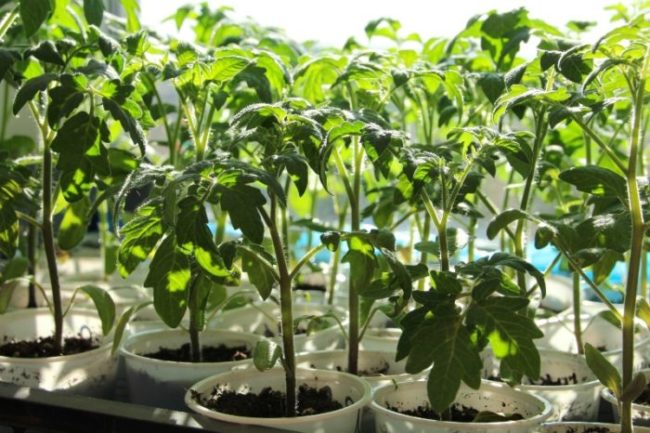 There are many types of nutritious and stimulating tomato crops in the feedings: organic, mineral, universal (for all garden crops), targeted (suitable only for tomatoes). Each has its own task. But experienced gardeners, gardeners, business executives know that all that is good is what is brought in timely, at the right time and at the address. They are also guided by the commandment: establish the cause of the weakness of the plants, then compensate for the lack of macro and microelements by preparing what the particular adult bush needs for a tomato.
There are many types of nutritious and stimulating tomato crops in the feedings: organic, mineral, universal (for all garden crops), targeted (suitable only for tomatoes). Each has its own task. But experienced gardeners, gardeners, business executives know that all that is good is what is brought in timely, at the right time and at the address. They are also guided by the commandment: establish the cause of the weakness of the plants, then compensate for the lack of macro and microelements by preparing what the particular adult bush needs for a tomato.
We look at the seedlings and determine what is missing:
- fragile, brittle stem, pale leaf greens and manifesting yellowness - need nitrogen - a stimulator of growth and cell renewal;
- the sprout has stopped on the spot, it does not go up, the dark green leaves “fonit” with violet, dry out and fall off - phosphorus - will ensure the improvement of photosynthesis and absorption of nutrients;
- leaves are covered with spots, twisted, the culture of Heleeth - molybdenum - protein synthesizer, accumulating growth and strength;
- bronze color of foliage, chlorotic symptoms of color - zinc - produces immunity;
- pallor of the tips joins leaf chlorosis - copper - hydro-exchange regulator;
- the flowering fades, the upper buds, the leaves, and with them the roots die off - boron - an amplifier of root power, the restorer of the ovaries;
- greens become stained, holes in - manganese - the cells are saturated with proper nutrition, breathing resumes;
- kidneys, roots spontaneously damaged so that they begin to die off, the edges of the twisted leaves dry out - calcium - improves metabolism and fermentation;
- brightened leaves with streaks that have not lost their green brightness are similar to marble — magnesium enhances the absorption of added phosphorus and potassium solution;
- Chlorosis appears in the streaks of pale and icteric foliage, but the tissues do not exfoliate or die - iron is the foundation of stable photosynthesis and chlorophyll aggregation.
Undernourished seedlings weaken. Overfed - fats, increasing the mass instead of forming the ovary. All made in a timely manner and in the case - tomatoes grow sturdy, vigorous, with a plump stem.
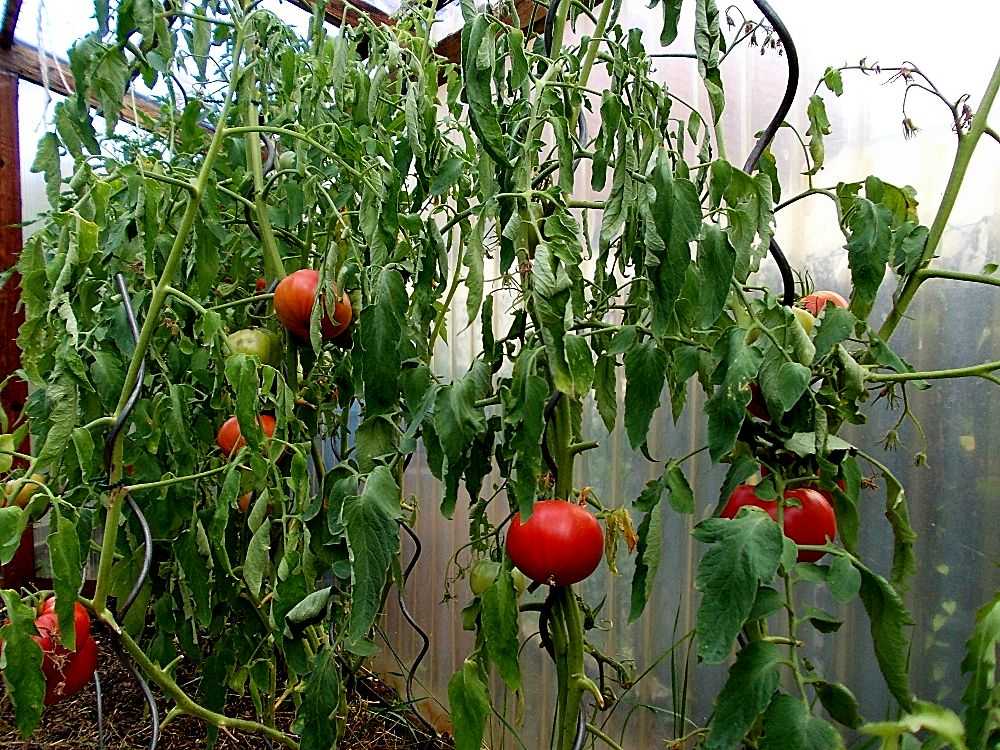
Rating professional regulators of tomato growth
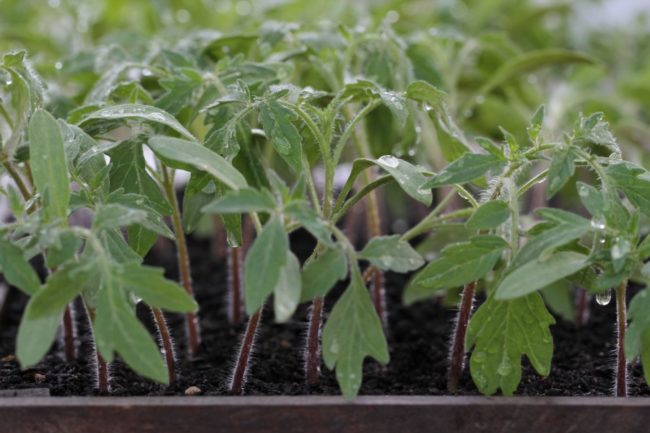 The traditional scheme of feeding seedlings grown by the classical method provides for the first sub-feed two weeks after picking - in the seedling stage, there are 3-4 full-fledged leaves in the seedling. Used not only nutrient solutions, but growth stimulants. There are many of them, but gardeners planting large areas with tomato bushes and who know a lot about professional means prefer:
The traditional scheme of feeding seedlings grown by the classical method provides for the first sub-feed two weeks after picking - in the seedling stage, there are 3-4 full-fledged leaves in the seedling. Used not only nutrient solutions, but growth stimulants. There are many of them, but gardeners planting large areas with tomato bushes and who know a lot about professional means prefer:
- The athlete is a biostimulator that regulates the growth and immunity of seedlings at the adult stage. It thickens the stem and crown, produces the activity of side shoots. After the first use (3-4 leaves on the stem), it is recommended to repeat it in a week: the seedlings will acquire fleshiness and strength.
- Mortar - powder substance of a complex orientation. Solves the problem of exhaustion, fading growth of thinned and faded seedlings, even with poor-quality soil substrate. The solution is prepared at the rate of 1 g per liter of warm (8-24 hours settled down) water. Effective feeding scheme - once in 7-10 days. Good for spraying over the tops of the tops, and for basal make-up. Tomato sprouts thicken after the first procedure.
- Nitrophoska is a granular fertilizer that combines potassium, nitrogen and phosphorus. A balanced mineral composition activates the development of seedlings immediately after proper picking. It is noticed that the seedlings thicken after 10-12 days. It grows stocky, steadily branching and fruiting.
- Agricola is a universal preparation (it can be in a liquid, granular form, in the form of a stick, which is stuck under the root of a seedling), which contains a complex of all necessary for increasing stability, proper growth and strength of seedlings, increasing the number of ovaries, macro- and microelements - from potassium to iron. It also stimulates the development of resistance to pests and diseases. The proportions of the solution: 1 to 200 - on the initial development of seedlings, 1 to 100 - when planting seedlings in open ground. For tomato suitable Agricola, labeled on the label number 3.
Experienced business executives advocate that the solution for young seedlings (at the 3-4 leaf stage) should be prepared in exactly the same way - half of the dose indicated in the instructions. Subsequent feed sprouts may already be full. But first they need to adapt to rich "food". On the eve of top dressing (in the evening), the soil in the tanks with seedlings is generously moistened. Tomatoes prefer morning nutritional procedures.
Folk household kit fertilizer
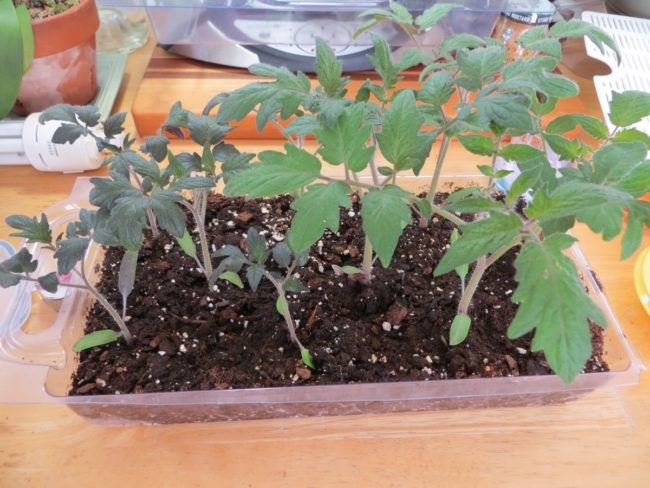 Opponents of chemistry, artificial fertilizers prefer compositions made in the old fashioned way. And they really are not inferior in efficiency in that they are sold in specialized departments of supermarkets or gardening shops. The only negative is more troublesome. Preparation of fertilizer sometimes requires a long time, but in the top three among the substances of simple preparation are considered the most popular feeding from:
Opponents of chemistry, artificial fertilizers prefer compositions made in the old fashioned way. And they really are not inferior in efficiency in that they are sold in specialized departments of supermarkets or gardening shops. The only negative is more troublesome. Preparation of fertilizer sometimes requires a long time, but in the top three among the substances of simple preparation are considered the most popular feeding from:
- Kefir. Dilute 1 l in a bucket of water (7-10 l) and water in the morning seedlings in boxes (only at the root!). The first application - after two weeks of planting sprouts in the ground. Repeated - in two weeks. In the future - every ten days. A complete replacement of artificial mineral additives, containing copper, iron, calcium, phosphorus, potassium. Strengthens growth, promotes intracellular metabolic processes, protects tomatoes from late blight.
- Banana peel infusion. It activates the growth of roots, branching rhizomes, formation of ovaries, thickening of the stems. Used in all phases of the development of tomato. The first feeding is introduced into the classic time interval fertilizer seedlings - with the appearance of 3-4 leaves. The second - a week before planting seedlings in open ground (stimulates adaptation). Next - in the period of flowering and the formation of ovaries. The latter, when the fruit ripens, to increase its mass. Prepared from 17-20 washed peel, added to 10 liters of warm boiled water. Capacity clog, put in a dark place and incubated for 5-8 days. Filter out. Infusion before making the root necessarily (!) Diluted with water - 1: 2.
The container for the banana tincture is sterilized before putting all the ingredients in it. Water is boiled for at least 10 minutes. Unused concentrate is able to retain its properties for a month after uncorking - under a tightly closed lid.
- Iodine solution. Resuscitating agent for stunted, stretched, faded thinned stems. For the initial irrigation under the root (in the traditional period of early feeding), plant a drop of iodine in 3 liters of warm, settled water. The next re-fertilization - in 3-4 weeks. Concentration varies - 2-3 drops per 3 liters of liquid. Stems quickly thicken and grow stronger. With overgrown seedlings, fertilizing with iodine solution is contraindicated - the bush will be hard to tie up, so much it will become high.
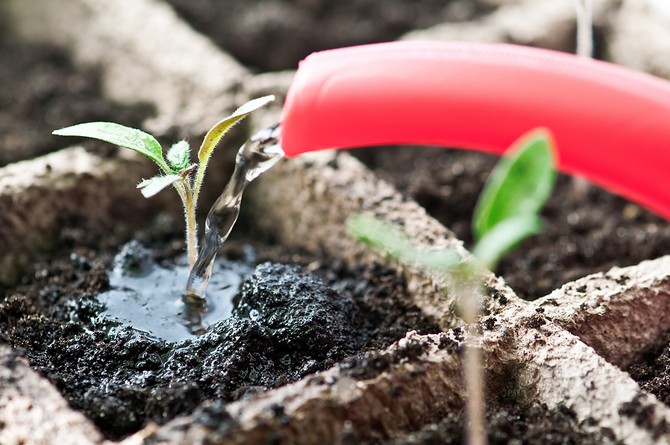
Those who have never tried feeding before and are still not very well versed in the phases of development of tomato seedlings, it is better to use specialized or self-made fertilizer at the time of picking or transplanting. Pay attention to the signals given by seedlings and adult bushes, and remember: it is better not to give additional feeding than to overload the seedlings. The measure should be in everything.


 (7 ratings, average: 4,86 from 5)
(7 ratings, average: 4,86 from 5)